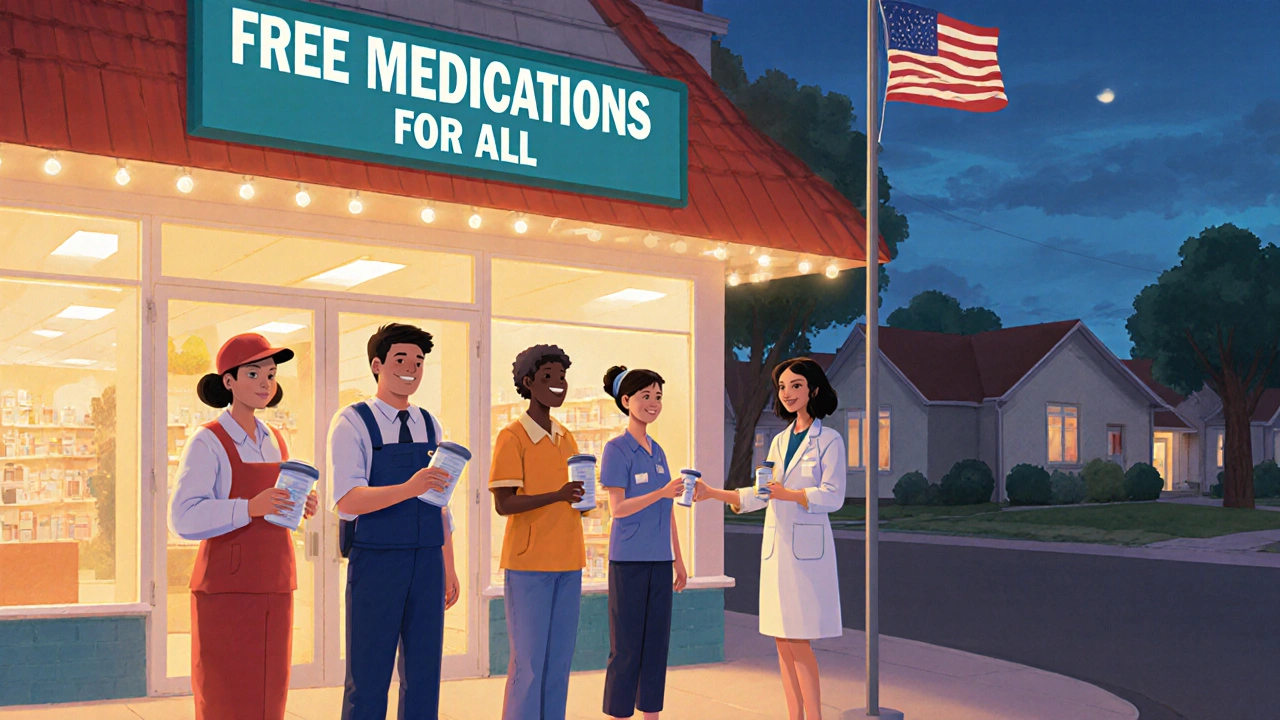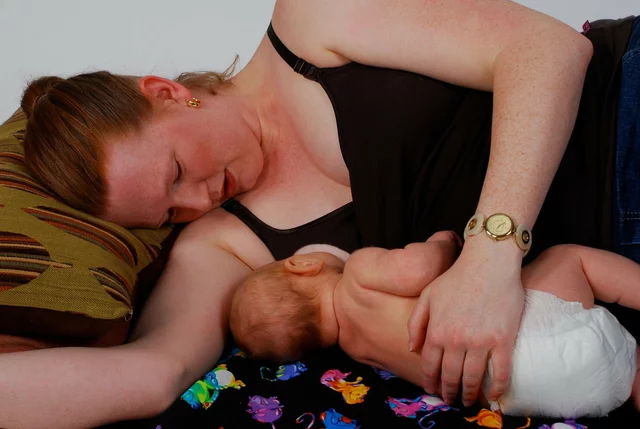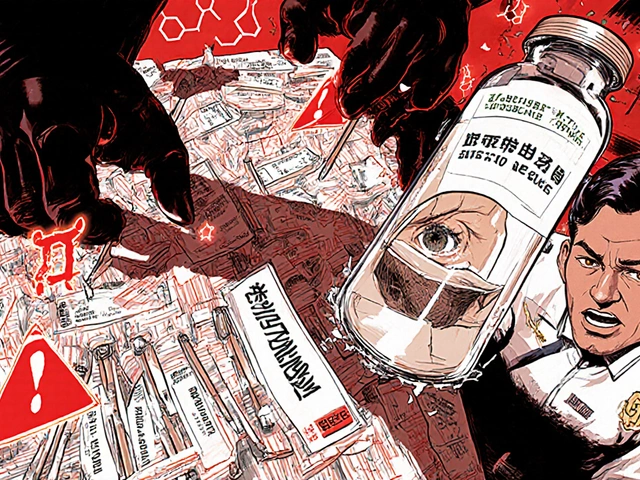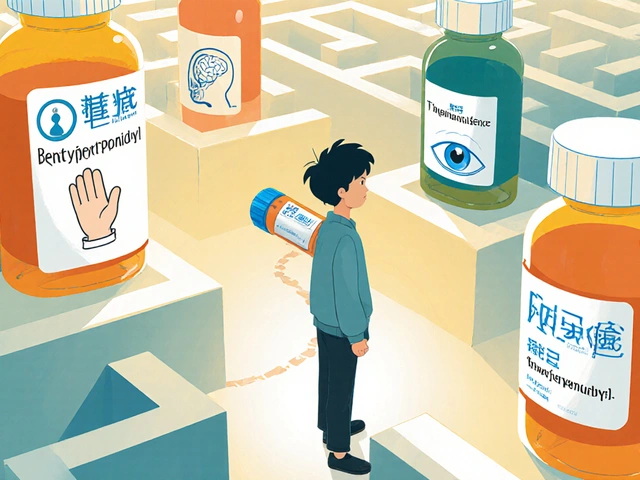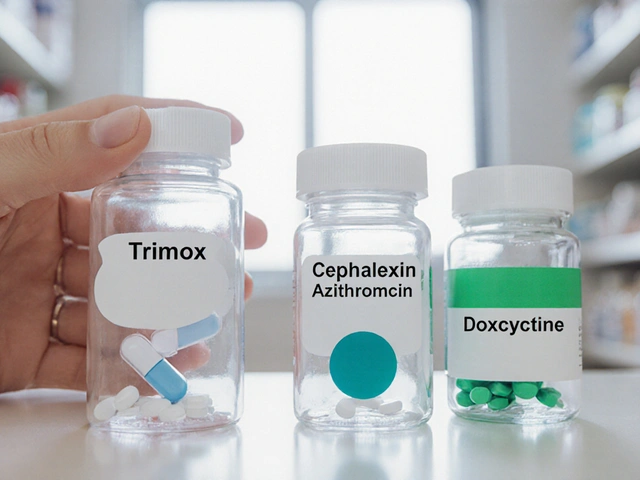If you’re struggling to pay for your medications, you’re not alone. Millions of Americans - even those with jobs - can’t afford their prescriptions. A diabetes pill might cost $300 a month. Blood pressure medicine? Another $150. For many, that’s more than rent or groceries. But help exists. Community clinics across the U.S. offer free or deeply discounted medications to people who need them most. You don’t need insurance. You don’t need to be homeless. You just need to be struggling to pay.
How Community Clinics Give Out Free Medications
Community clinics don’t just hand out pills. They’re part of a well-organized safety net. These clinics partner with pharmaceutical companies, nonprofits, and government programs to get medications at zero or low cost. The biggest player? Americares. In 2023, they distributed $190 million in donated medicines to nearly 1,000 clinics serving over 7 million people. That’s not a rumor - it’s documented data.Here’s how it works: Drug makers donate excess inventory - medicines that are still safe and effective but can’t be sold due to packaging changes, overstock, or nearing expiration dates. Clinics like the Charlottesville Free Clinic or HOPES Free Clinic receive these donations, store them properly, and give them directly to patients. No pharmacy markups. No insurance paperwork. Just the medicine you need.
Some clinics have their own in-house pharmacies. Others work with local pharmacies to fill prescriptions at reduced prices. Many use patient assistance programs run by drug companies like Teva, Pfizer, or Merck. These programs give free or low-cost drugs to people who make less than 200% of the federal poverty level - about $29,160 a year for one person in 2023.
Where to Find These Clinics
You can’t just walk into any clinic and get free meds. You need to find one that’s set up to help. Start with two key tools.First, go to HRSA’s Find a Health Center tool. This is the official U.S. government directory for Federally Qualified Health Centers (FQHCs). These centers serve everyone, regardless of income or insurance. They charge on a sliding scale - so if you make $25,000 a year, your $500 insulin bill might drop to $15. You can find one near you by entering your zip code at findahealthcenter.hrsa.gov.
Second, visit the National Association of Free & Charitable Clinics (nafcclinics.org). This site lists over 1,400 clinics that offer medications for free to uninsured patients. Unlike FQHCs, these clinics usually don’t charge anything - but they often have strict income limits and limited hours. Many only open two evenings a week. Some are run by volunteers - medical students, retired doctors, nurses.
State-specific directories also exist. In Virginia, for example, the Virginia Association of Free & Charitable Clinics lists every member clinic and what they offer - from asthma inhalers to antidepressants. Search “[Your State] free clinics” to find your local list.
Who Qualifies
You don’t need to be poor to qualify. You just need to be unable to afford your meds. Most clinics require:- Proof of income - recent pay stubs, tax return, or unemployment letter
- Proof of residency - utility bill, lease, or ID with your current address
- Proof of no insurance - or that your insurance doesn’t cover your meds
- Current prescription or doctor’s note for the medication
Some clinics serve people who make up to 200% of the federal poverty level. Others set the limit lower - 150% or even 100%. But here’s the key: you don’t have to be unemployed. The AAFP Foundation found that most patients at free clinics are working - cashiers, warehouse workers, home health aides. They have jobs. But their paychecks don’t stretch far enough to cover rent, food, and meds.
Even if you have insurance, you might still qualify. Many people are underinsured - their plan has a $5,000 deductible, or it doesn’t cover certain drugs. If you’re paying hundreds out of pocket each month, a clinic can help.
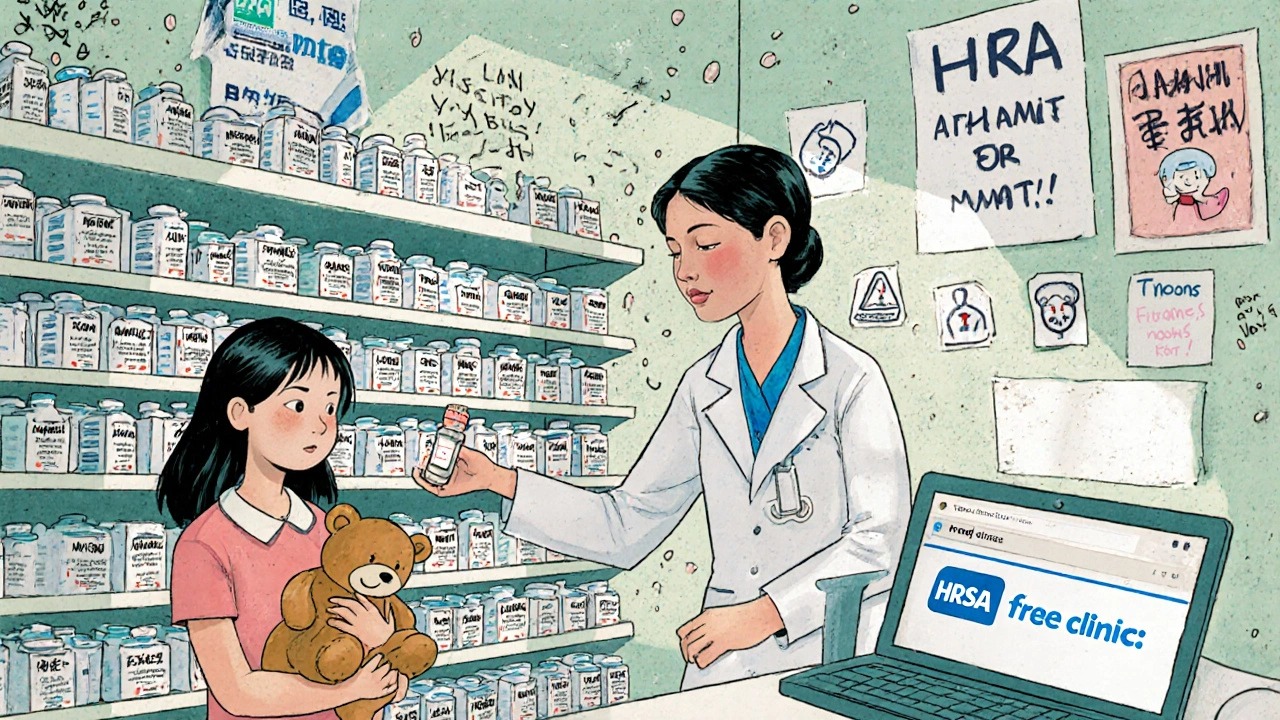
What Medications Are Available
Clinics don’t have every drug on the shelf. But they cover the most common, life-saving ones:- Diabetes: Metformin, insulin, GLP-1 agonists
- High blood pressure: Lisinopril, amlodipine, hydrochlorothiazide
- Asthma: Albuterol inhalers, fluticasone
- Cholesterol: Atorvastatin, simvastatin
- Mental health: Sertraline, fluoxetine, citalopram
- Thyroid: Levothyroxine
- Antibiotics: Amoxicillin, azithromycin
Special programs like Community Routes: Access to Mental Health Care - a partnership between Direct Relief, NAFC, and Teva - focus specifically on anxiety and depression meds. Since February 2023, they’ve expanded to seven states, giving clinics grants to stock these drugs.
Don’t expect brand-name drugs like Ozempic or Humira. Those are expensive and rarely donated. But the generic versions - metformin, sertraline, lisinopril - are widely available. And they work just as well.
What to Expect When You Go
Walking into a free clinic for the first time can feel intimidating. Here’s what actually happens:- Check in at the front desk. You’ll fill out a form with your income, medical history, and current meds.
- Meet with a nurse or provider. They’ll ask about your condition, how long you’ve been taking your meds, and if you’ve had trouble paying.
- They’ll check if you qualify for their program or a drug company’s assistance plan.
- If you qualify, they’ll give you your meds on the spot - or give you a voucher to pick them up at a local pharmacy.
- You might get a follow-up appointment. Many clinics offer ongoing care for chronic conditions.
Wait times can be long. Some clinics have waiting lists of 4 to 6 weeks. That’s why it’s smart to start early. Don’t wait until your last pill is gone.
Bring everything: pay stubs, ID, prescription bottles, doctor’s notes. The more you bring, the faster they can help you.
Why This System Exists - And Why It’s Struggling
There are over 30 million uninsured Americans. Free clinics serve millions - but the need is far greater than the supply. In 2022, 42% of clinics reported medication shortages. One clinic in rural Kansas ran out of insulin for three weeks. Another in Ohio couldn’t refill asthma inhalers because donations dropped after the pandemic.These clinics survive on donations and volunteers. That’s unstable. A drug company might donate 10,000 pills one year - and nothing the next. A volunteer doctor might leave for a better-paying job. Clinics with diversified funding - mixing grants, small patient fees, and donations - are 37% more likely to stay open, according to NAFC.
Still, they’re the only option for many. A mother working two jobs can’t afford her child’s ADHD meds. A veteran with PTSD can’t pay for his antidepressants. A senior on fixed income skips insulin to pay for heat. These aren’t hypotheticals. They’re real stories happening every day.
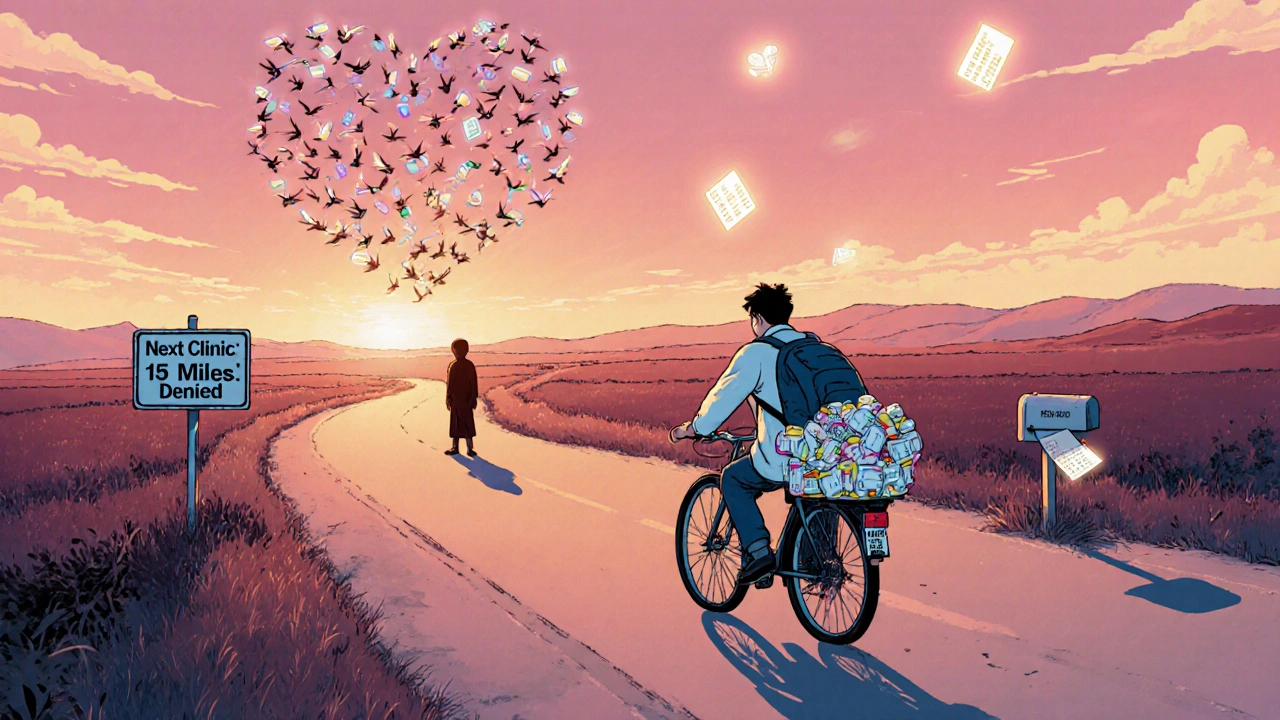
What You Can Do Right Now
Don’t wait. Start today.- Go to findahealthcenter.hrsa.gov and enter your zip code. Call the nearest FQHC. Ask: “Do you offer free or sliding-scale medications?”
- Visit nafcclinics.org. Use their clinic finder. Look for ones near you. Call. Ask: “Do you give out free prescriptions for diabetes, blood pressure, or mental health meds?”
- Check your state’s free clinic network. Search “[Your State] free clinics directory.”
- Call your pharmacy. Ask if they know of any local medication assistance programs.
- Write down your meds, doses, and monthly costs. Bring this list with you.
If you’re on insulin, blood pressure meds, or antidepressants - you’re likely eligible. Don’t assume you’re not. Don’t wait for a crisis. These clinics exist because people like you needed help. They’re waiting for you to walk through the door.
What If You Can’t Find a Clinic Near You?
If you live in a rural area or can’t get to a clinic, try these alternatives:- Use RxAssist.org - it’s a free database of drug company assistance programs. You can apply online for free meds from companies like Pfizer, Merck, and Eli Lilly.
- Ask your doctor for samples. Many still have them, especially for diabetes and high blood pressure meds.
- Check NeedyMeds.org - they list patient assistance programs, discount cards, and local charities that help with meds.
- Call 211 - the national helpline. They connect people to local health and social services, including free clinics.
Some pharmacies - like Walmart, Target, and Kroger - sell a list of generic drugs for $4 a month. It’s not free, but it’s a huge drop from $300. Ask your pharmacist for the $4 list.
Can I get free medications if I have insurance?
Yes. Many people with insurance still can’t afford their meds because of high deductibles, copays, or coverage gaps. If your insurance doesn’t cover your prescription or you’re paying hundreds out of pocket, you likely qualify for free or low-cost meds at a community clinic. Bring your insurance card and your prescription cost receipts - they’ll help determine your eligibility.
Do I need to be homeless to get free medications?
No. You don’t need to be homeless. Most patients at free clinics have jobs - they’re cashiers, delivery drivers, teachers, and home health aides. The requirement is income, not housing status. If you make less than $29,160 a year as a single person (or less than $59,900 for a family of four), you’re likely eligible.
How long does it take to get medications after applying?
It varies. Some clinics give you meds the same day. Others take 1-2 weeks to process applications or wait for donations. If you’re on insulin or a life-saving drug, tell the clinic right away - they’ll prioritize you. Don’t wait until you’re out of pills.
Can I get brand-name drugs like Ozempic for free?
Almost never. Brand-name drugs like Ozempic, Humira, or Eliquis are too expensive for clinics to stock. But the generic versions - metformin, semaglutide, warfarin - are widely available and just as effective. Ask your provider if a generic alternative is right for you.
Are these clinics safe and reliable?
Yes. Federally Qualified Health Centers (FQHCs) are government-certified and held to strict medical standards. Free clinics are often run by licensed doctors and nurses, many of whom volunteer their time. Medications are stored properly, labeled correctly, and come from verified donors like Americares and pharmaceutical companies. These aren’t shady operations - they’re trusted parts of the healthcare safety net.
Can I get help for mental health medications?
Yes. Programs like Community Routes: Access to Mental Health Care specifically fund anxiety and depression meds for uninsured patients. Sertraline, fluoxetine, and citalopram are commonly available. Mental health is a priority for many clinics - especially since depression and anxiety often go untreated due to cost.

